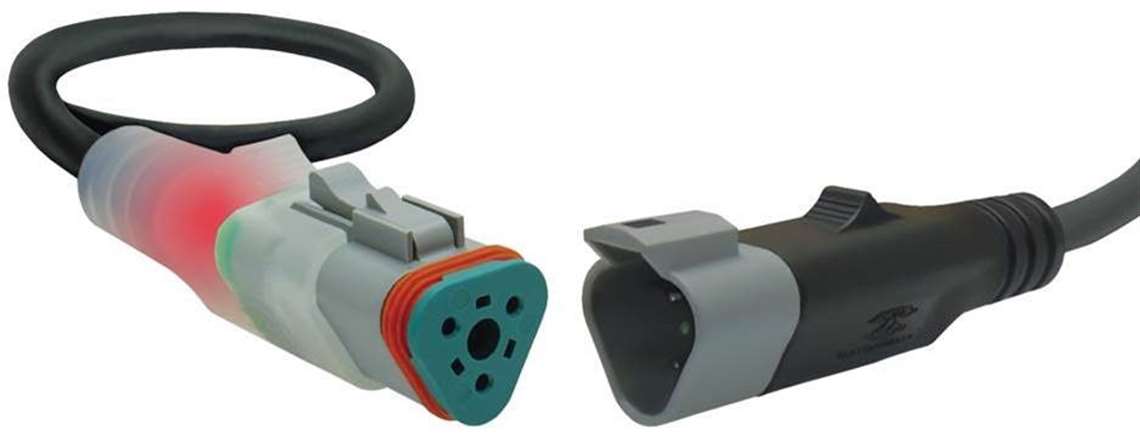Canfield’s New DIN-To-Deutsch Connectors
14 July 2020

Canfield Connector, a manufacturer of engineered connectivity and sensing products, has introduced a new addition to its GatorMate connector line. The two- and three-pin GT Series of rugged, connectors are fully molded, which eliminates the need to purchase crimping tools and reduces the labor required to assemble former field-wire versions, the company said.
With the addition of the 5JGT DIN to Deutsch adapter, any solenoid valve DIN connection can easily convert to Deutsch-style connection, Canfield said.
“Canfield’s GatorMate GT connector is ‘guaranteed tough’ for superior connection control,” said Todd Harmon, vice president of Canfield Industries. “Many Deutsch connectors require multiple steps and tools for installation, but the new series allows smaller OEMs to use Deutsch-style connectors without having to purchase special crimping tools and supplies that are usually required. The smaller size, improved environmental sealing, and push to-lock connection are an exciting improvement over the DIN-style solenoid valve plugs.”
The GT Series is an all-in-one molded connector assembly engineered to work in the harshest environments, carrying an IP67 rating and resistant to dust, vibration, shock, and moisture. The connectors are over molded to enhance connection performance and ensure that high stress or vibration will not cause unintentional disconnection, the company said.
Each two- and three-pin GT Connector can be customized to include various media compatibility or high-flex, special use, or high-temperature cable. An optional LED indicator light and MOV or diode surge protection are also available.
The interconnection properties of this design lend themselves to applications such as mobile equipment, commercial vehicles and hydraulic valves, Canfield said.
STAY CONNECTED




Receive the information you need when you need it through our world-leading magazines, newsletters and daily briefings.
POWER SOURCING GUIDE
The trusted reference and buyer’s guide for 83 years
The original “desktop search engine,” guiding nearly 10,000 users in more than 90 countries it is the primary reference for specifications and details on all the components that go into engine systems.
Visit Now
CONNECT WITH THE TEAM









